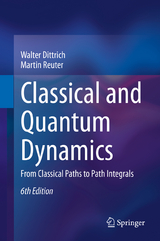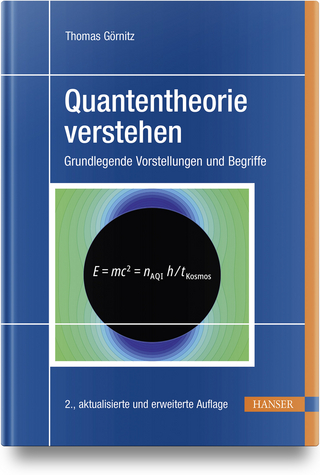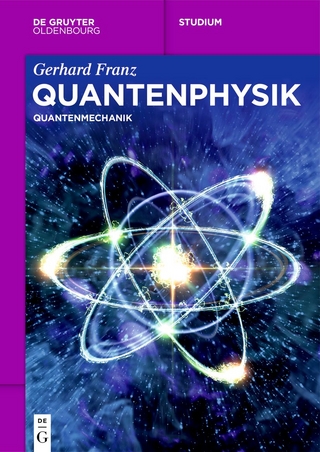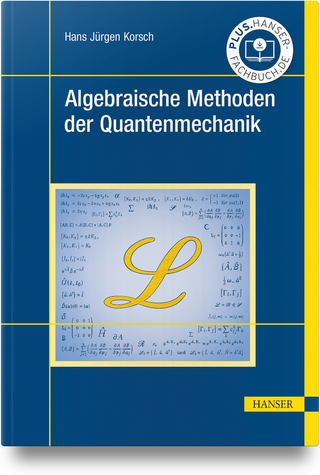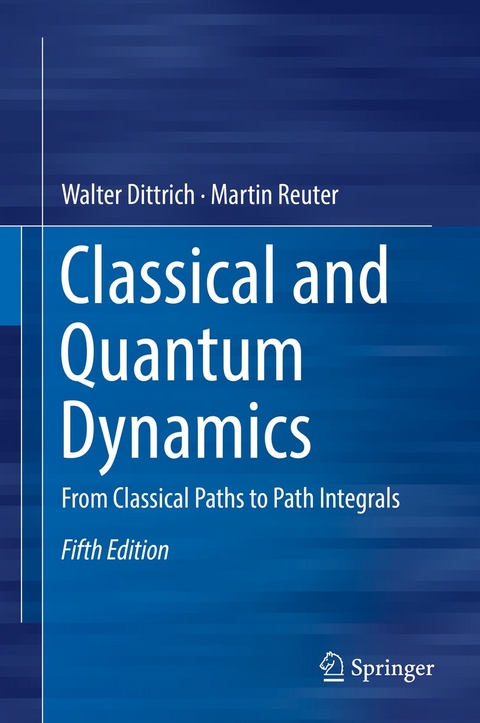
Classical and Quantum Dynamics
Springer International Publishing (Verlag)
978-3-319-58297-9 (ISBN)
- Titel erscheint in neuer Auflage
- Artikel merken
The fifth edition has been revised and enlarged to include chapters on quantum electrodynamics, in particular, Schwinger's proper time method and the treatment of classical and quantum mechanics with Lie brackets and pseudocanonical transformations. It is shown that operator quantum electrodynamics can be equivalently described with c-numbers, as demonstrated by calculating the propagation function for an electron in a prescribed classical electromagnetic field.
Prof. Dr. Walter Dittrich had been head of the quantum electrodynamics group at the University of Tübingen. He started his work on gauge theories and QED in collaboration with Julian Schwinger. Walter Dittrich has worked for more than 20 years in cooperation with the Institute for Advanced Studies at Princeton and the National Accelerator Laboratory at Stanford (SLAC). He has over 30 years of teaching experience and is one of the key scientists in developing the theoretical framework of quantum electrodynamics. Prof. Dr. Martin Reuter is head of the quantum Einstein gravity group at the Institute for High Energy Physics of the University Mainz. His research focuses on particle physics, quantum field theory and quantum Einstein gravity. He worked in close collaboration with the synchrotron facility DESY and the large hadron collider collaborations at CERN. He has more than 30 years of teaching experience in theoretical physics.
Introduction.- The Action Principles in Mechanics.- The Action Principle in Classical Electrodynamics.- Application of the Action Principles.- Jacobi Fields, Conjugate Points.-Canonical Transformations.- The Hamilton-Jacobi Equation.- Action-Angle Variables.- The Adiabatic Invariance of the Action Variables.- Time-Independent Canonical Perturbation Theory .- Canonical Perturbation Theory with Several Degrees of Freedom.- Canonical Adiabatic Theory.- Removal of Resonances.- Superconvergent Perturbation Theory, KAM Theorem.- Poincaré Surface of Sections, Mappings.- The KAM Theorem.- Fundamental Principles of Quantum Mechanics.- Functional Derivative Approach.- Examples for Calculating Path Integrals.- Direct Evaluation of Path Integrals.- Linear Oscillator with Time-Dependent Frequency.- Propagators for Particles in an External Magnetic Field.- Simple Applications of Propagator Functions.- The WKB Approximation.- Computing the trace.- Partition Function for the Harmonic Oscillator.- Introduction to Homotopy Theory.- Classical Chern-Simons Mechanics.- Semiclassical Quantization.- The "Maslov Anomaly" for the Harmonic Oscillator.-Maslov Anomaly and the Morse Index Theorem.- Berry's Phase.- Classical Geometric Phases: Foucault and Euler.- Berry Phase and Parametric Harmonic Oscillator.- Topological Phases in Planar Electrodynamics.- Path Integral Formulation of Quantum Electrodynamics.- Particle in Harmonic E-Field E(t) = Esin w0 t; Schwinger-Fock Proper-Time Method.- The Usefulness of Lie Brackets: From Classical and Quantum Mechanics to Quantum Electrodynamics.- Appendix.- Solutions.- Index.
| Erscheinungsdatum | 03.06.2017 |
|---|---|
| Zusatzinfo | XVI, 489 p. 18 illus. |
| Verlagsort | Cham |
| Sprache | englisch |
| Maße | 155 x 235 mm |
| Gewicht | 919 g |
| Themenwelt | Naturwissenschaften ► Physik / Astronomie ► Quantenphysik |
| Naturwissenschaften ► Physik / Astronomie ► Theoretische Physik | |
| Schlagworte | Action Angle Variable • Adiabatic Invariance Physics • Berry's Phase • Canonical Perturbation Theory • Hamilton Jacobi Equation • Introduction to Classical and Quantum Field Theory • Lie Brackets • Path Integral Physics • Schwinger Action Principle • Textbook Classical Dynamics • Textbook Quantum Dynamics • Textbook Quantum Mechanics • Topology Quantum Mechanics |
| ISBN-10 | 3-319-58297-6 / 3319582976 |
| ISBN-13 | 978-3-319-58297-9 / 9783319582979 |
| Zustand | Neuware |
| Haben Sie eine Frage zum Produkt? |
aus dem Bereich
